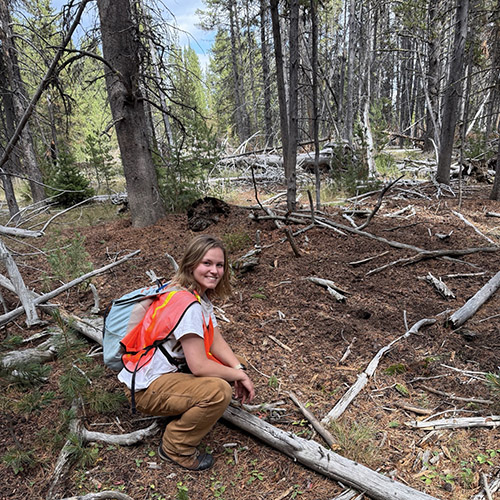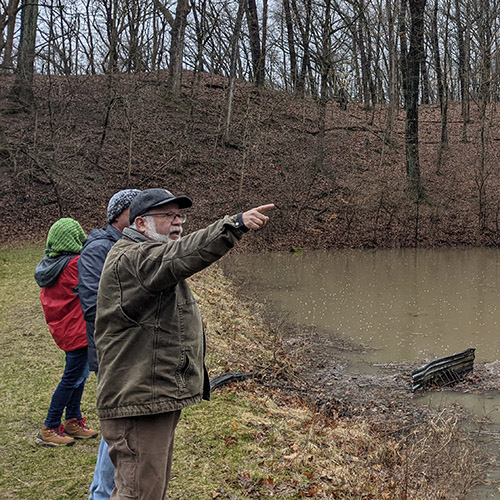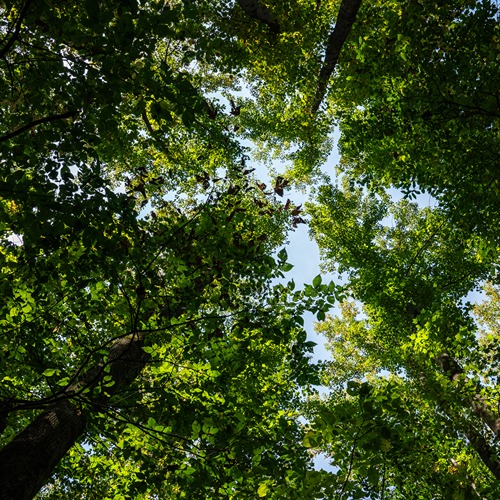Researchers Aim to Support Hardwood Industry with Formation of Wood Utilization Team
The forest products industry is estimated to make a $17 billion annual economic impact in Indiana.
Researchers from Purdue Forestry and Natural Resources are teaming up with partners across the state to stimulate, expand and support the utilization of hardwood lumber by creating the Indiana Wood Utilization Team (IWUT). Goals for the project are to increase forest health and resilience, competitiveness of the wood products industry and economic development in rural areas of the state.
The Indiana Wood Utilization Team will aim to create and implement a strategic plan to increase awareness of the benefits of using forest resources in the state, after gathering input from an industry advisory board and a series of roundtable discussions across the state. The plan will include specific action items on forestland ownership, supply chain, manufacturing, marketing, policy and regulations and public perception. The IWUT team also will design, develop and implement a statewide promotional and educational campaign for the general public to increase awareness and utilization of wood products.
Researchers from FNR include Dr. Henry Quesada, Dr. Rado Gazo, Dr. Eva Haviarova and Purdue Extension forester Lenny Farlee, with Quesada acting as principal investigator on the project. Research partners include the Indiana Department of Natural Resources Division of Forestry, the Indiana Hardwood Lumbermen’s Association, the Indiana State Department of Agriculture, the Indiana Forestry and Woodland Owners Association, the Indiana Cooperative Invasive Species Management (SICIM), the Hoosier National Forest and private partners Jasper Chair and Pike Lumber Company.
“The forestry and the wood products industry in Indiana face many issues and challenges, however, there are many opportunities that the industry could take advantage of, such as the mass timber market, adding value to low-value hardwood species, and the increased push for environmentally friendly solutions,” Quesada said. “The partners in this proposal have a long history of working together to support forestry and forest products in Indiana. The IWUT will be an additional vehicle to support the development of new products and markets and increase forest health in Indiana.”
are many opportunities that the industry could take advantage of, such as the mass timber market, adding value to low-value hardwood species, and the increased push for environmentally friendly solutions,” Quesada said. “The partners in this proposal have a long history of working together to support forestry and forest products in Indiana. The IWUT will be an additional vehicle to support the development of new products and markets and increase forest health in Indiana.”
The first step in the project is to assemble the advisory board, including members from the partner organizations, which will gather input for creating the strategic plan by conducting 10 round-table discussions across the state.
The IWUT will then develop the strategic plan and design an educational curriculum to increase awareness of the benefits of using forest products and forests, which will be utilized by agriculture and natural resources extension educators throughout the state.
Other objectives for the IWUT project are to:
- Create guidelines, extension papers and webinars regarding the utilization of low-value hardwood species. This will facilitate increased usage of the state’s most common underused hardwood species - such as soft maple, sycamore, sweetgum, hackberry, basswood and beech - by increasing knowledge of forest management practices, processing practices (harvesting, sawing, drying and
 adding value), potential markets and innovative products.
adding value), potential markets and innovative products. - Create guidelines and workshops to support the increased inclusion of yellow poplar lumber in the mass timber market through education and by explaining the opportunities of mass timber and how to access the market.
- Promote the Indiana forest products industry at events throughout the state, such as state and county fairs, schools, industry conventions and conferences.
The advisory board will meet once a year to discuss new opportunities, tackle issues and discuss challenges. Quarterly meetings also will be conducted with partners to discuss the project’s progress.






